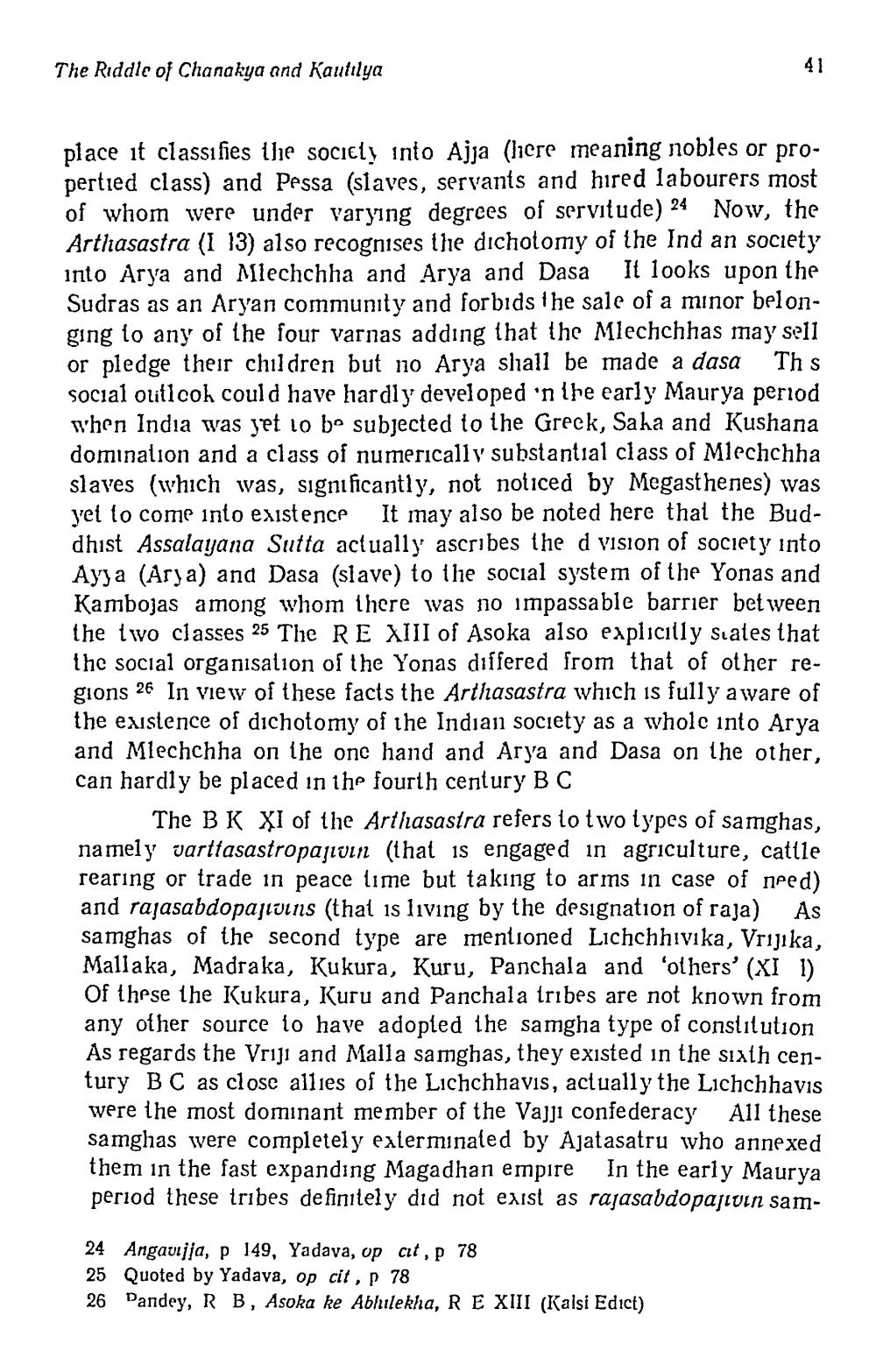________________
The Riddle of Chanakya and Kautilya
place it classifies the society into Ajja (hicre meaning nobles or propertied class) and Pessa (slaves, servants and hired labourers most of whom were under varying degrees of servitude) 24 Now, the Arthasastra (1 13) also recognises the dichotomy of the Ind an society into Arya and Miechchha and Arya and Dasa It looks upon the Sudras as an Aryan community and forbids the sale of a minor belonging to any of the four varnas adding that the Mlechchhas may sell or pledge their children but n10 Arya sliall be made a dasa Ths social outlcok could have hardly developed in the early Maurya period when India was yet to be subjected to the Greek, Saha and Kushana domination and a class of numerically substantial class of Mlechchha slaves (which was, significantly, not noticed by Megasthenes) was yet to come into existence. It may also be noted here that the Buddhist Assalayana Sutta actually ascribes the d vision of society into Ayya (Arya) and Dasa (slave) to the social system of the Yonas and Kambojas among whom there was no impassable barrier between the two classes 25 The RE XIII of Asoka also explicitly siates that the social organisation of the Yonas differed from that of other regions 26 In view of these facts the Arthasastra which is fully aware of the existence of dichotomy of the Indian society as a whole into Arya and Mlechchha on the one hand and Arya and Dasa on the other, can hardly be placed in the fourth century BC
The BK XI of the Arthasastra refers to two types of samghas, namely varttasastropajioen (that is engaged in agriculture, cattle rearing or trade in peace time but taking to arms in case of need) and rajasabdopajivins (that is living by the designation of raja) As samghas of the second type are mentioned Lichchhivika, Vrijika, Mallaka, Madraka, Kukura, Kuru, Panchala and others' (XI 1) Of these the Kukura, Kuru and Panchala tribes are not known from any other source to have adopted the samgha type of constitution As regards the Vriji and Malla samghas, they existed in the sixth century BC as close allies of the Lichchhavis, actually the Lichchhavis were the most dominant member of the Vajji confederacy All these samghas were completely exterminated by Ajatasatru who annexed them in the fast expanding Magadhan empire In the early Maurya period these tribes definitely did not exist as rajasabdopajiuin sam
24 Angavijja, p 149, Yadava, op cit, p 78 25 Quoted by Yadava, op cit, p 78 26 Pandey, RB, Asoka ke Abhilekha, REXIII (Kalsi Edict)




